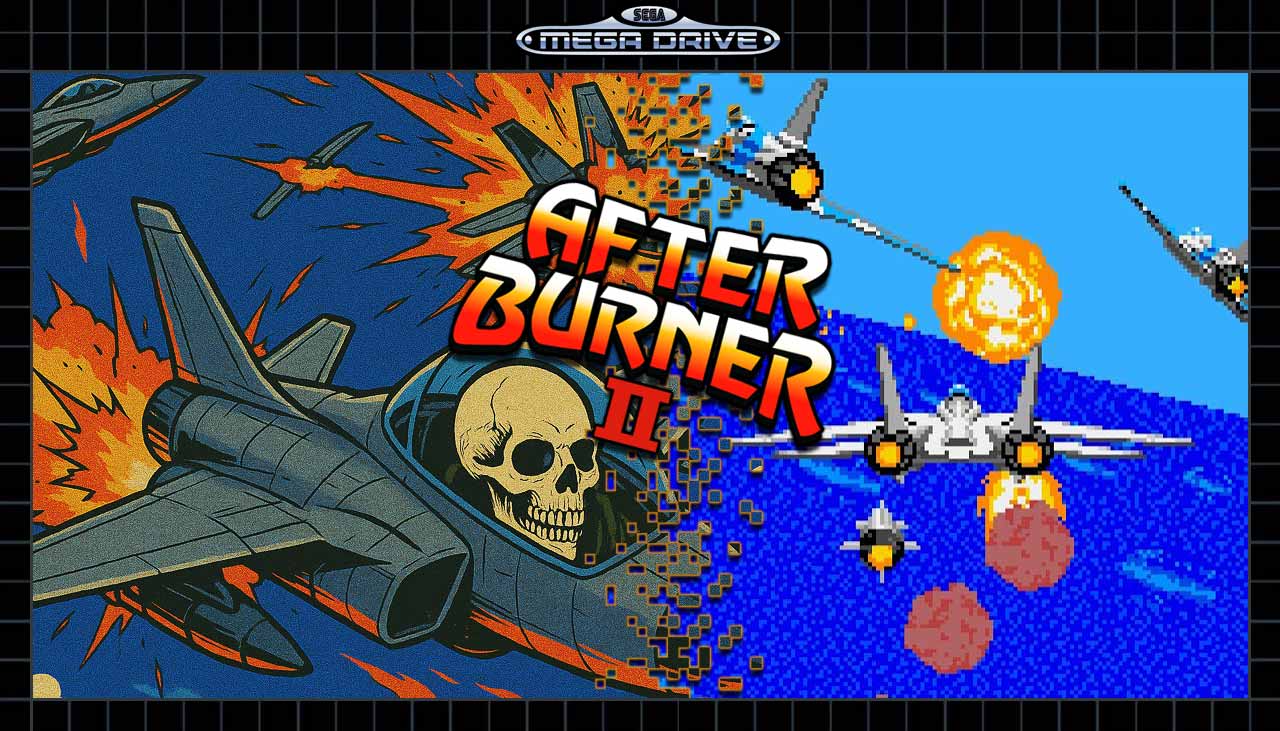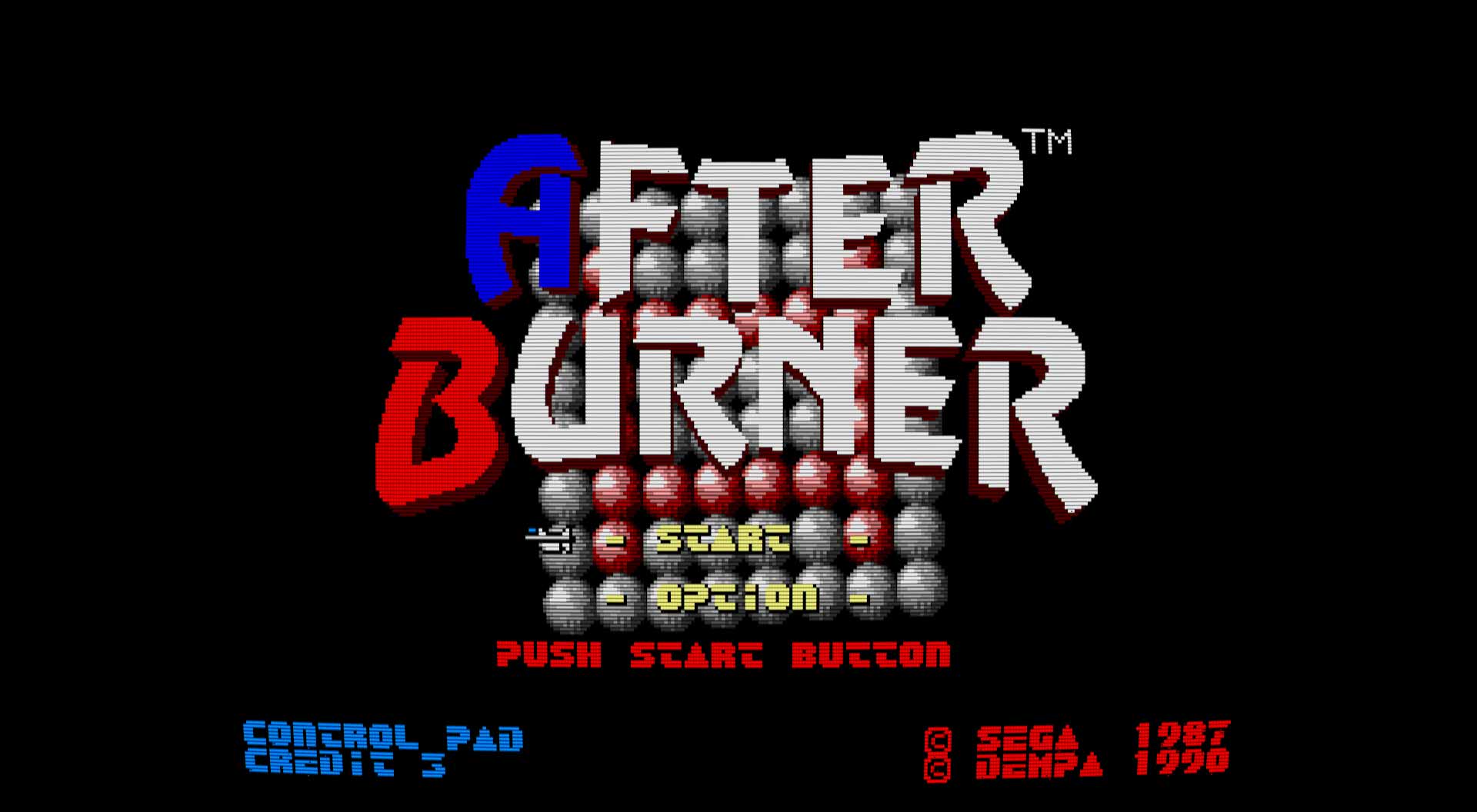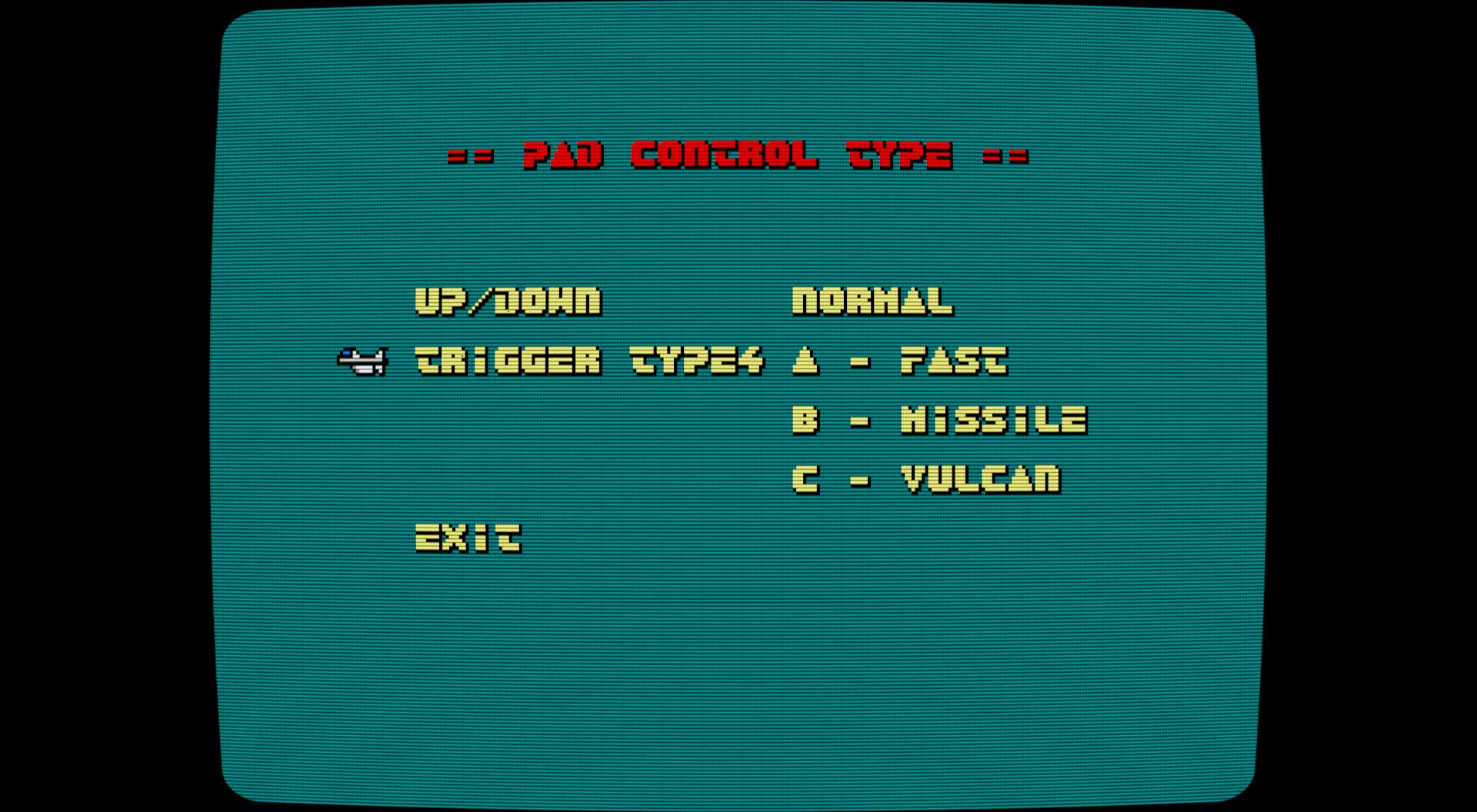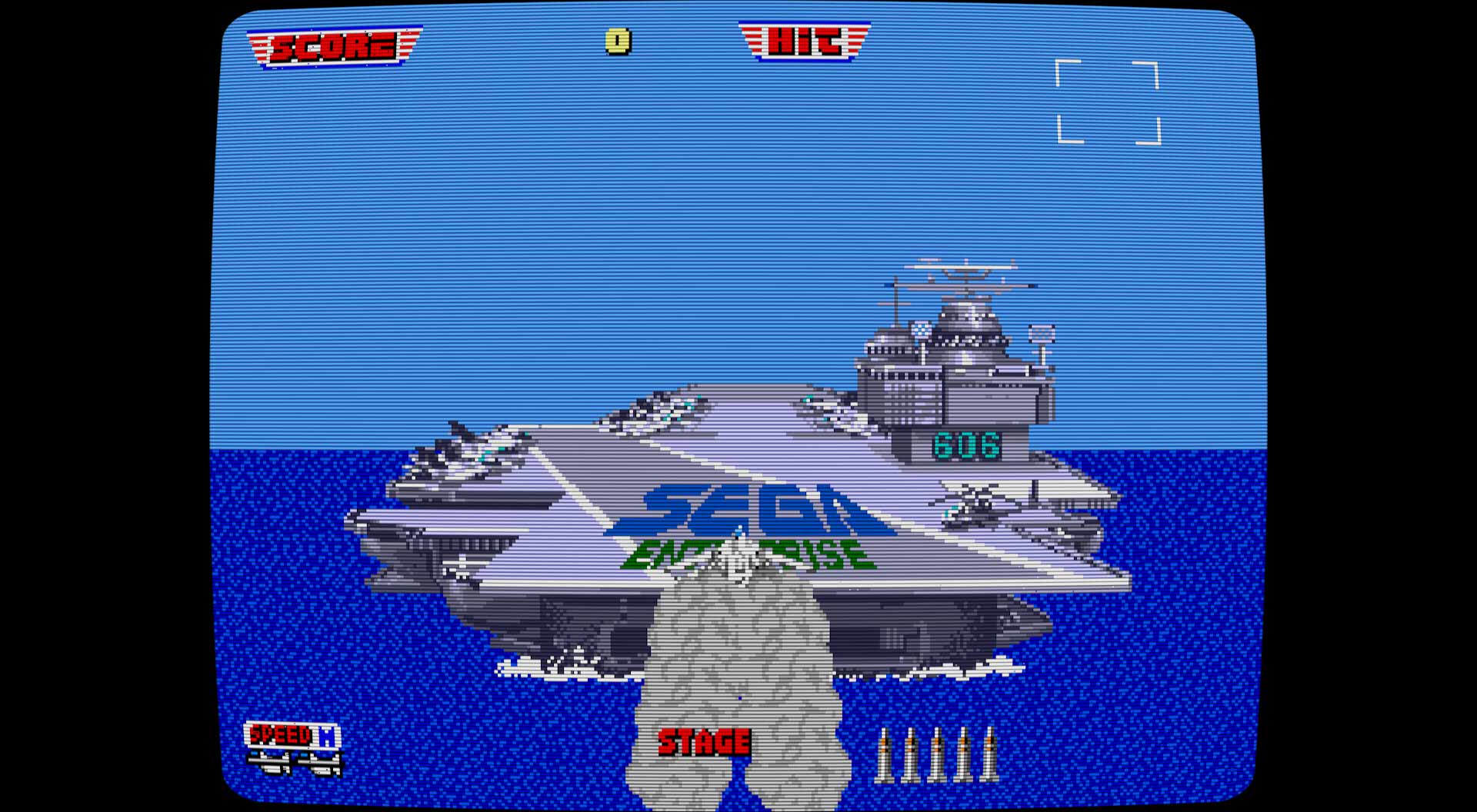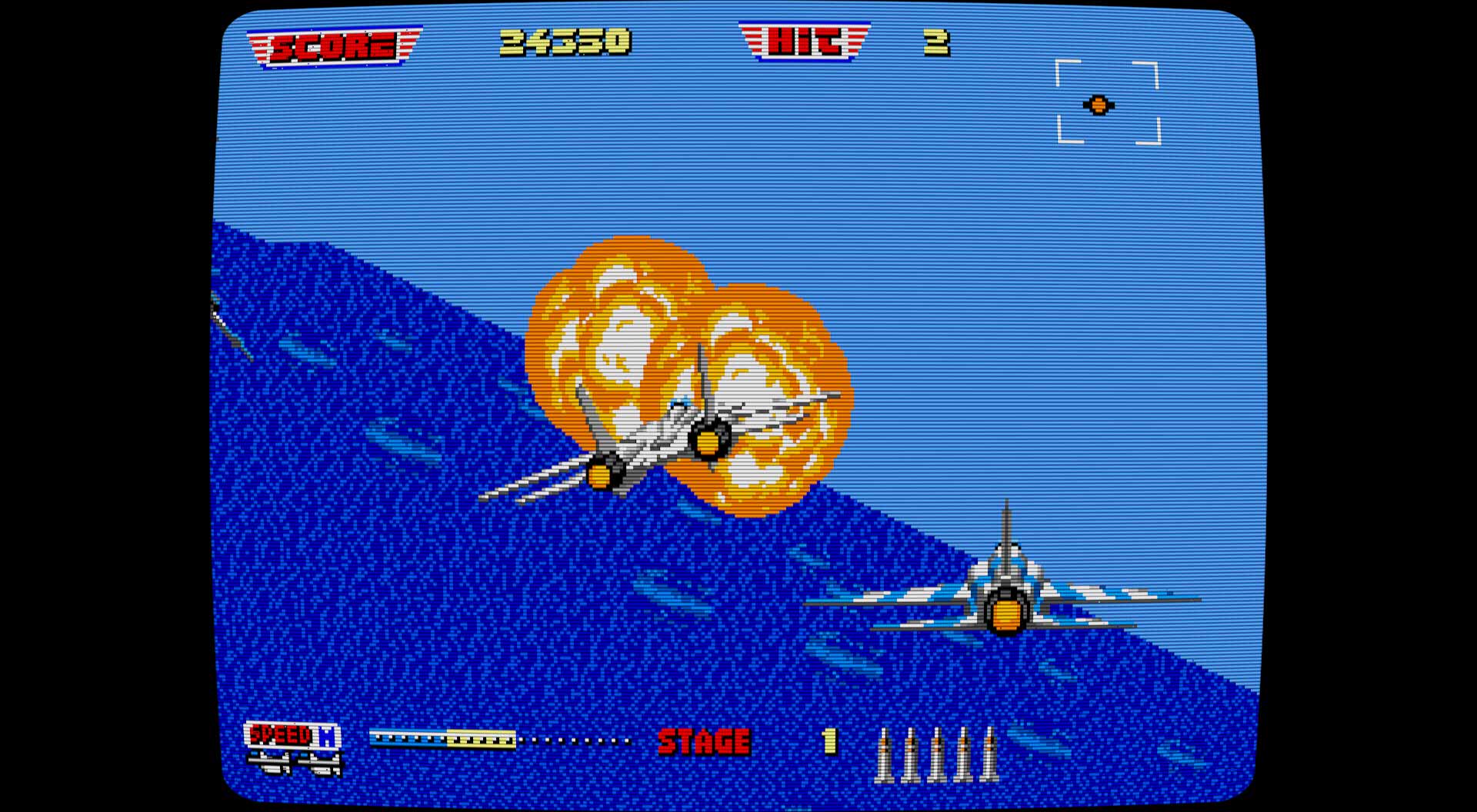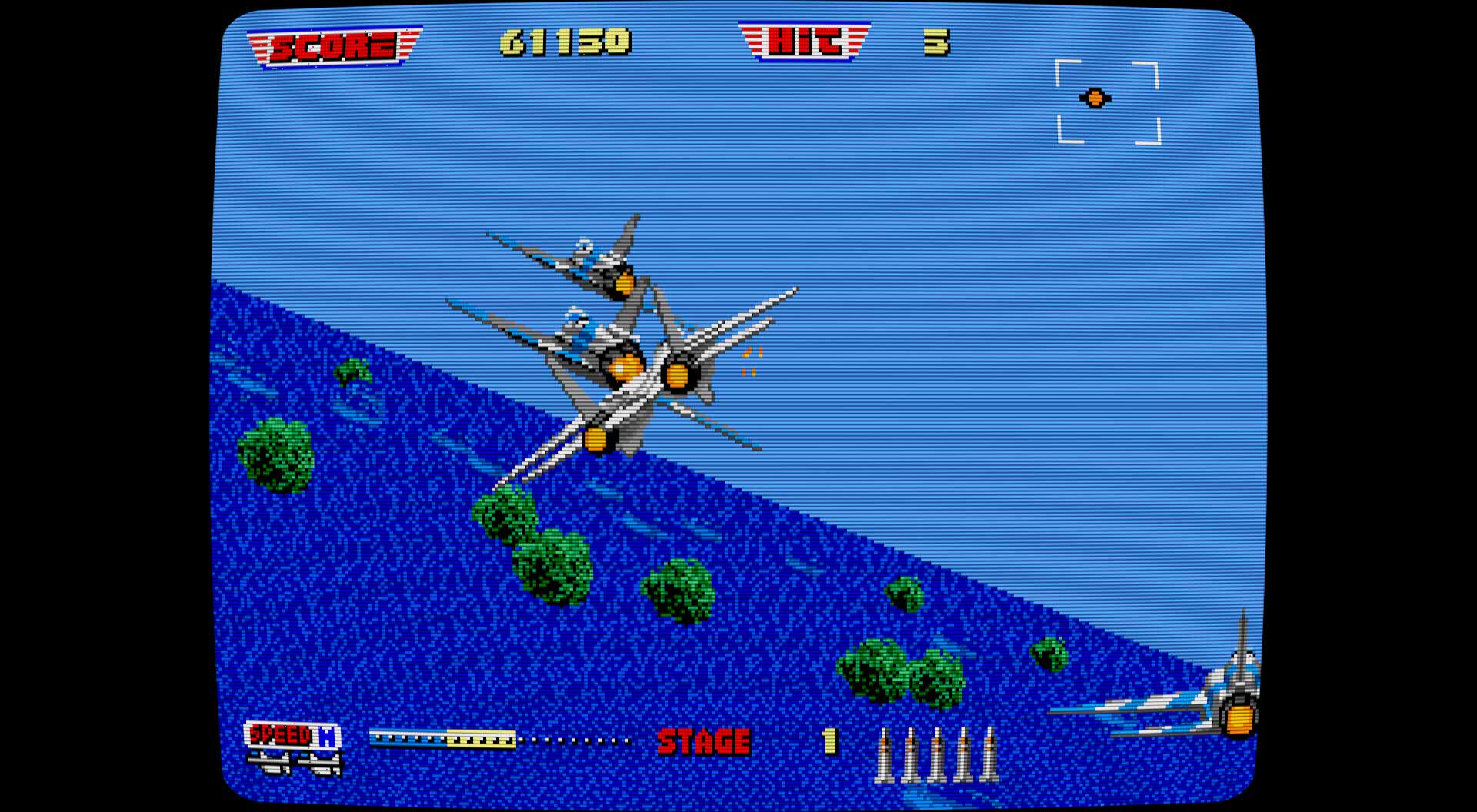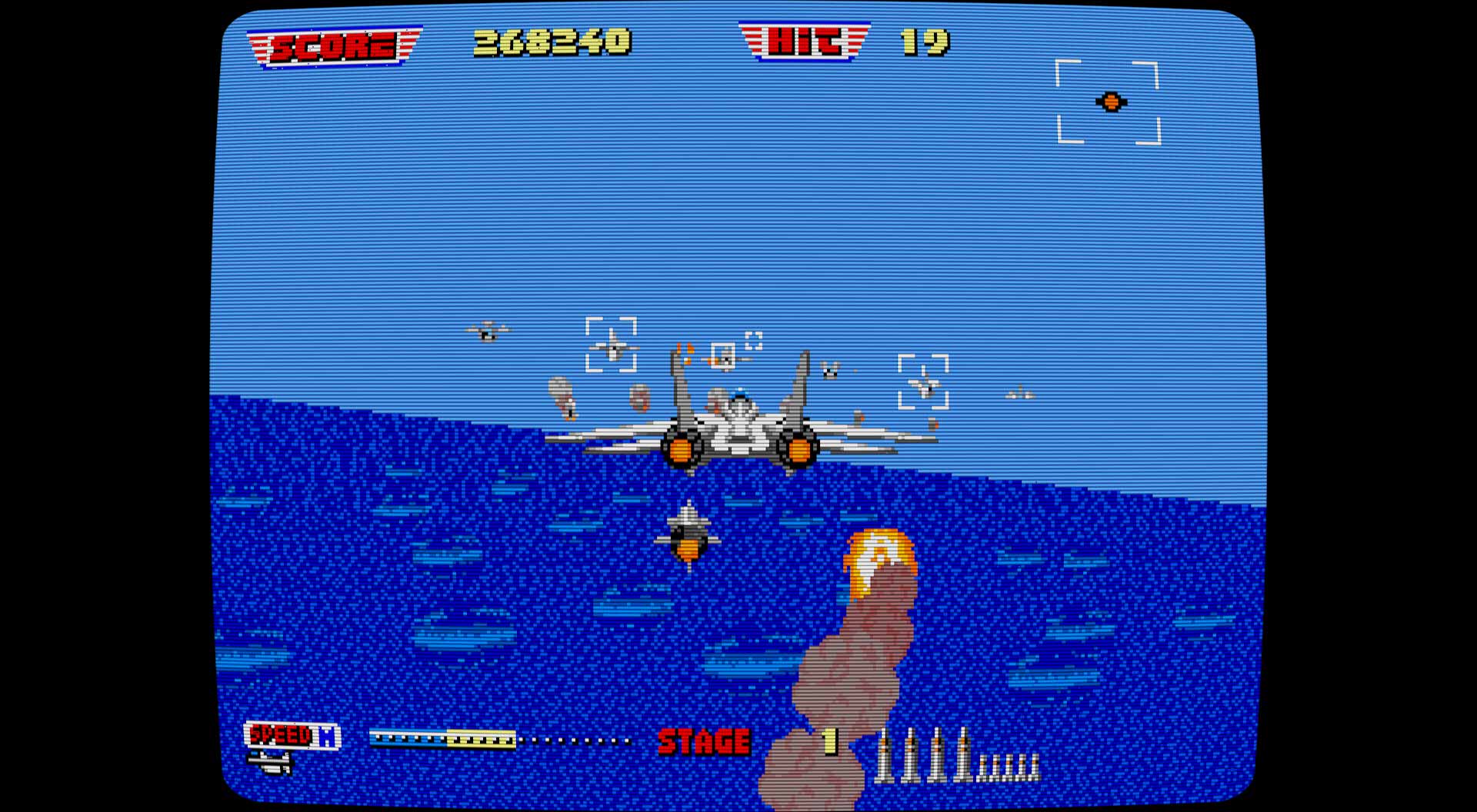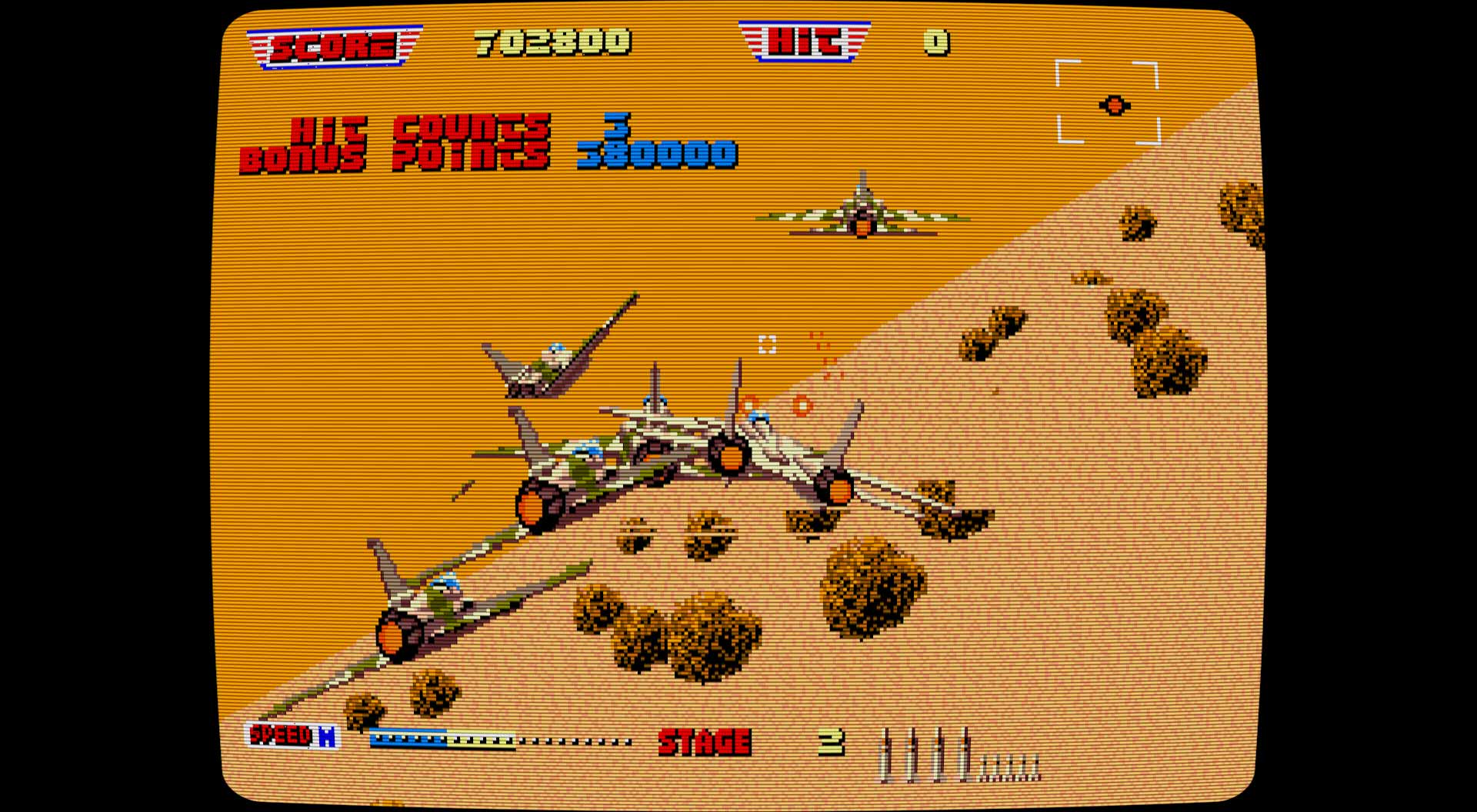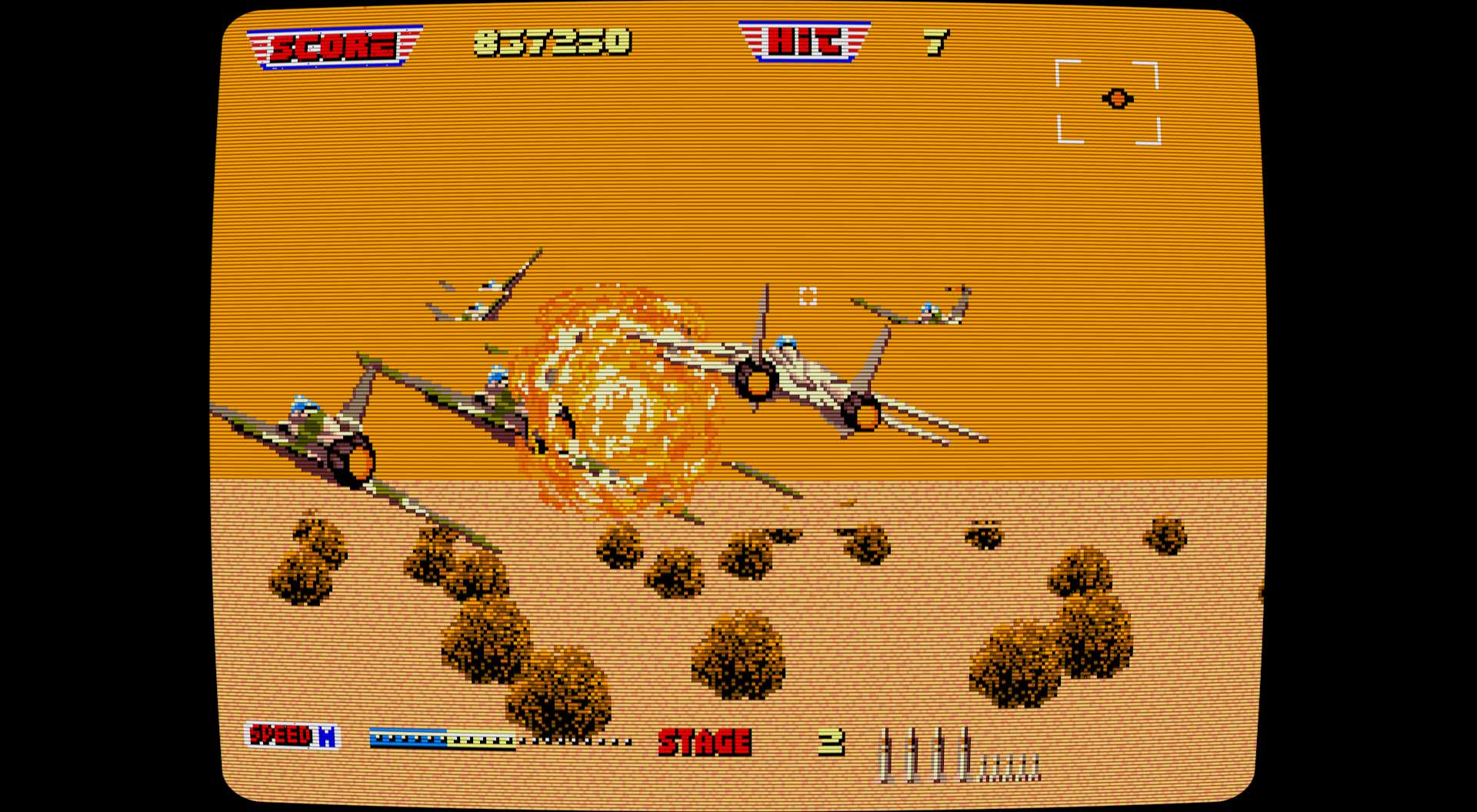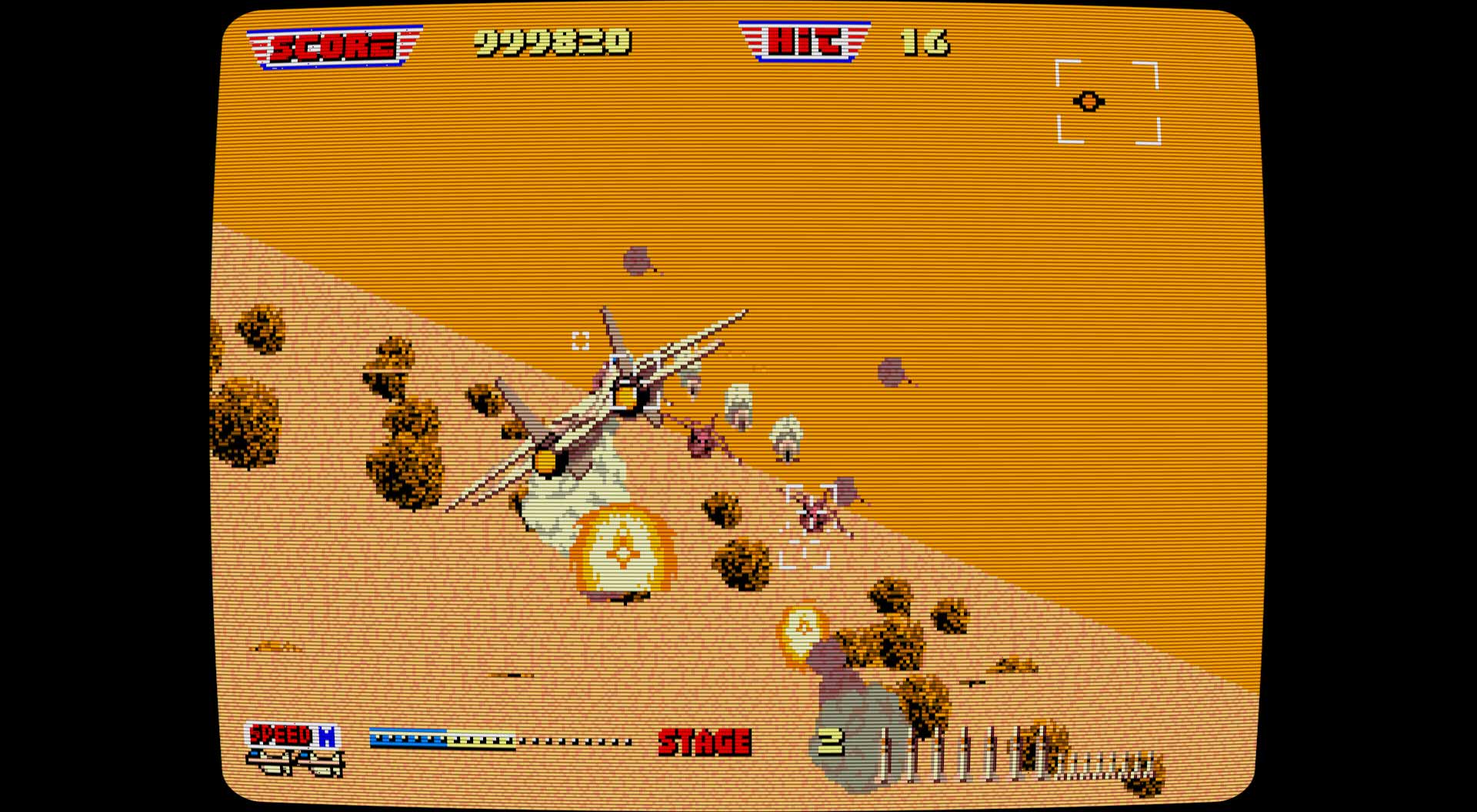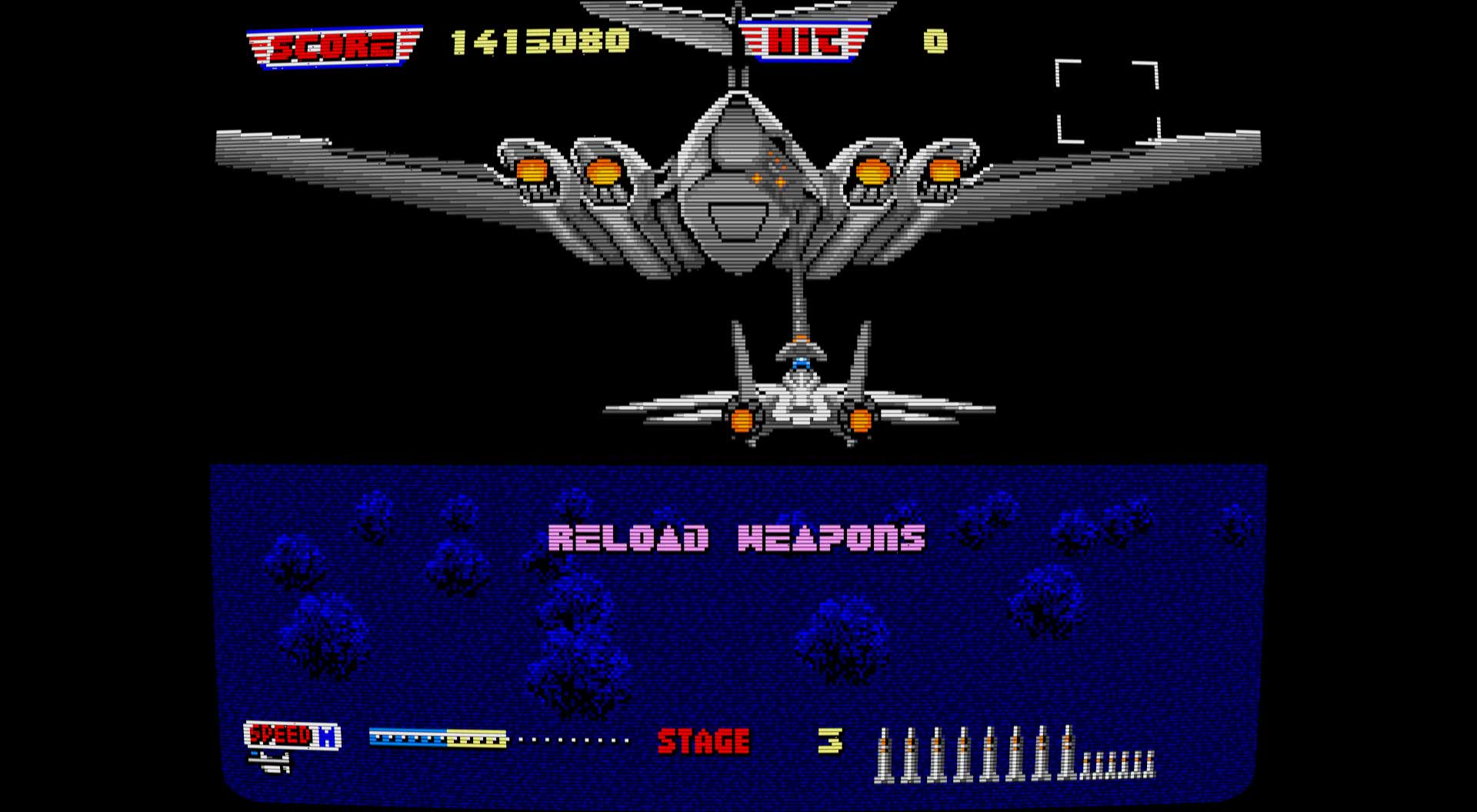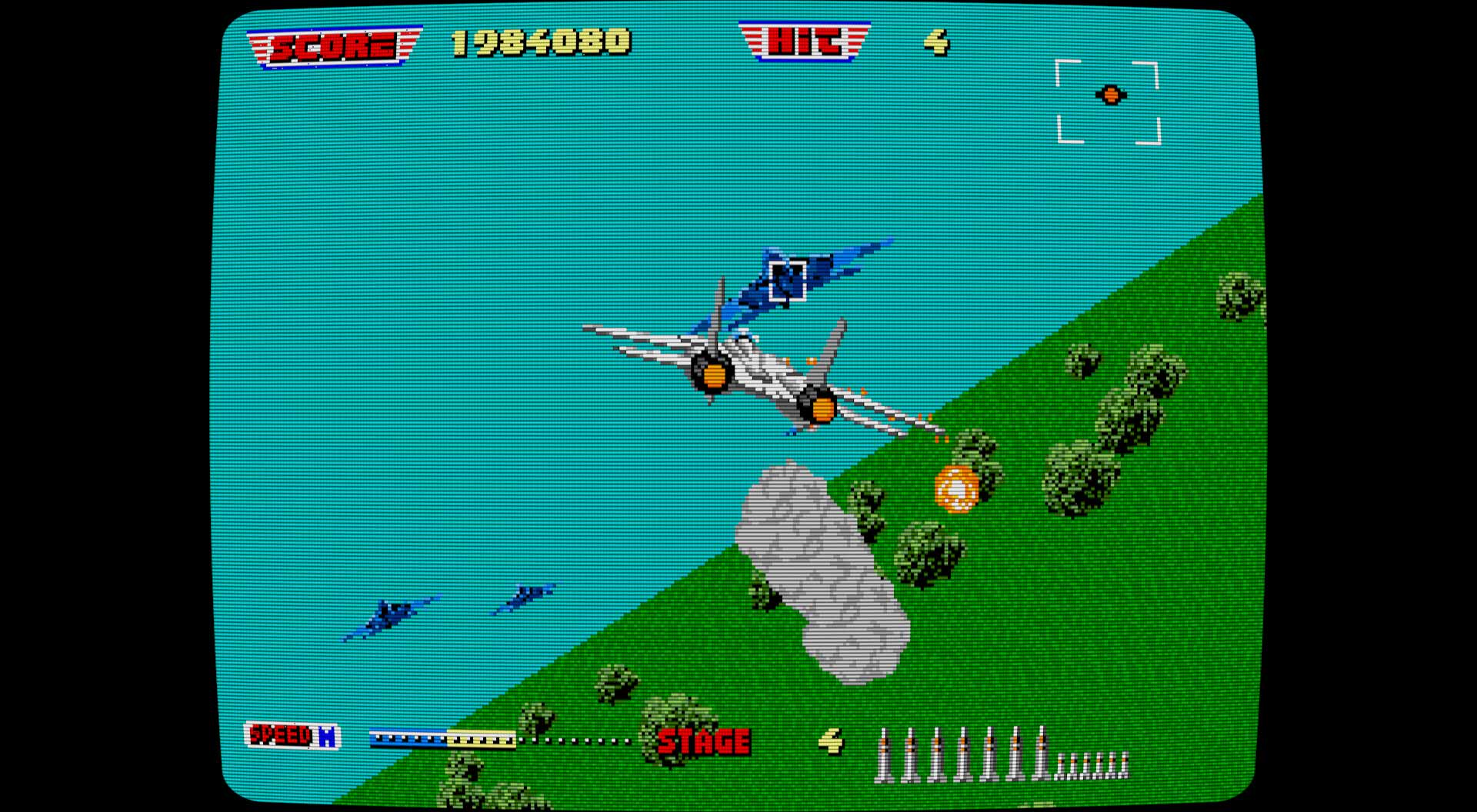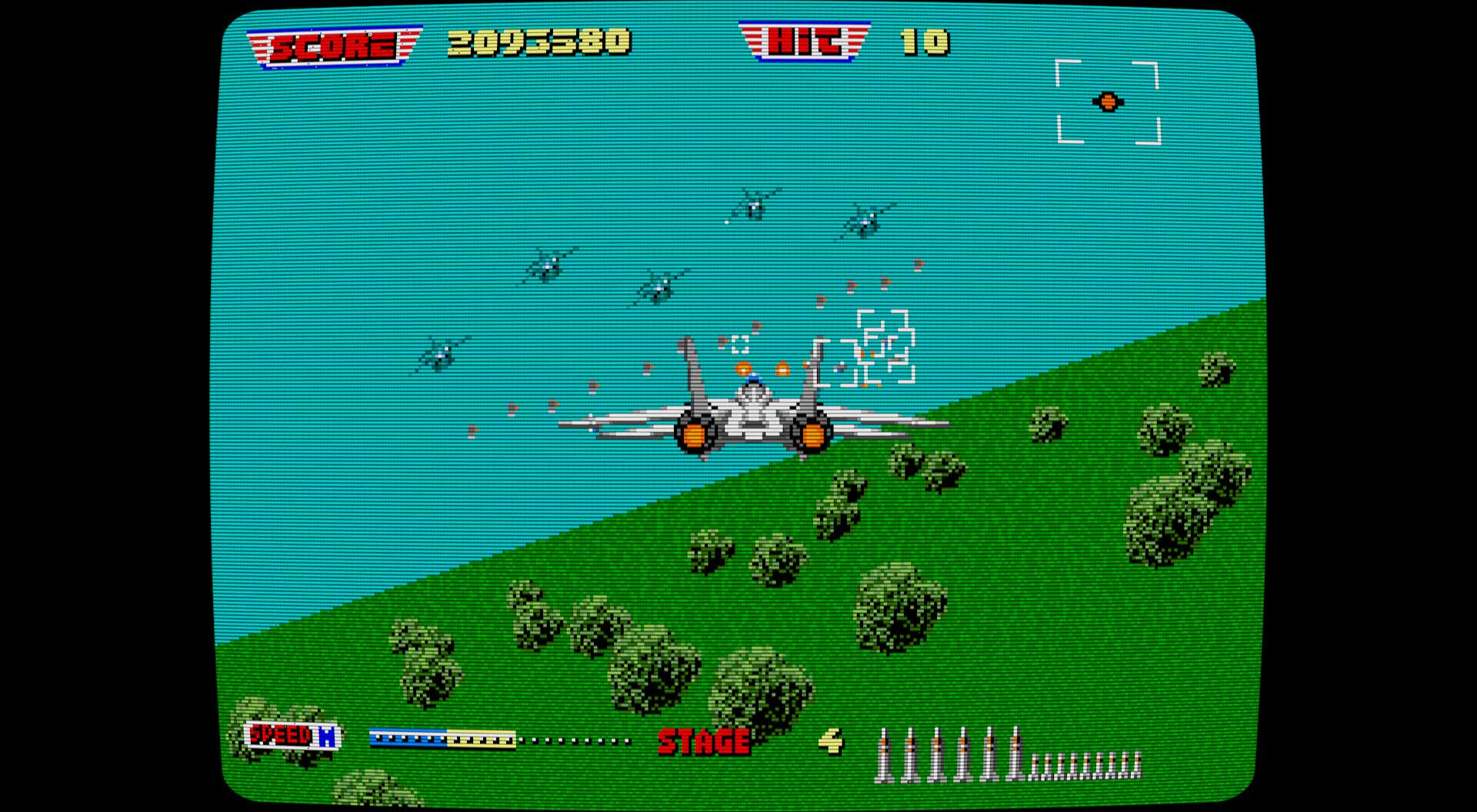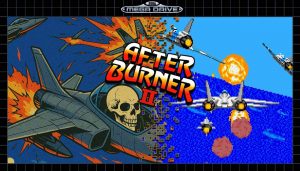
„Get ready!“ With these two words begins the high-flying action of After Burner II, Sega’s iconic jet shooter. You take control of an F-14 Tomcat and blaze through the skies, always on the edge, always chasing the next adrenaline rush. Originally an arcade giant with hydraulic motion, the Mega Drive version naturally had to make a few concessions – but the spirit of the original lives on.
Afterburner on, story off: After Burner II in arcade action
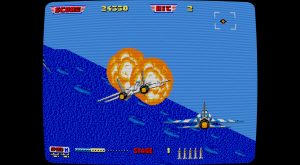
In After Burner II, you step into the role of an elite U.S. Air Force pilot operating deep behind enemy lines in an F-14 Tomcat. Your mission: to stop a powerful terrorist organization wreaking havoc through global airstrikes. You’ll battle through over 20 stages, each symbolically representing different regions and military installations – from open seas to enemy bases and desert landscapes. It’s a solo mission against overwhelming odds, with non-stop action! There’s no direct storyline to speak of – no dialogue, no cutscenes, no narrative depth. But the premise does its job: it sets the stage for explosive aerial combat in full-on, trigger-happy mode.
Speed and nonstop firepower: How much arcade action is left in the Mega Drive port
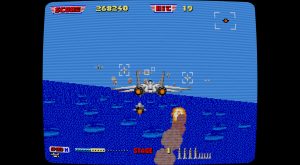
After Burner II remains an intense rail shooter on the Mega Drive, testing your reflexes and aiming skills. The F-14 Tomcat flies along predetermined paths through dense enemy formations, while you dodge, accelerate, and fire missiles. It quickly becomes clear that this is more of a fast-paced arcade ride than a truly balanced home console experience. Tactical depth or gameplay variety is minimal.
By default, the Vulcan cannon fires automatically, relieving your thumb during hectic dogfights and providing a constant barrage of bullets. For players who prefer manual control, this can be changed in the options menu. However, doing so comes at a cost: you’ll lose the ability to brake, and the aircraft can only accelerate. It’s a trade-off you’ll need to consciously make, one that highlights the game’s rigid design and the limitations of the standard Mega Drive controller. The lock-on system for missiles works well and delivers the expected arcade thrills – but the excitement wears off quickly. Enemy formations repeat, level design is basic, and the gameplay doesn’t really evolve. The initial high-speed spectacle gradually loses momentum. Even the thrust control, while potentially tactical, rarely becomes a meaningful part of the action.
Gameplay Video: A First Look at Sonic Spinball
This short video showcases the first level of After Burner II on the Mega Drive. I intentionally focus on just the first level in my videos — no spoilers — to give you a feel for the gameplay, graphics, and sound without ruining the fun of discovering the rest yourself.
Mega Drive vs. Arcade: How well does the port hold up
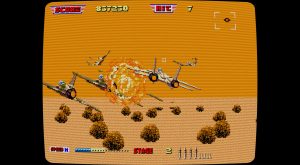
The Mega Drive version of After Burner II is, in many ways, an ambitious attempt to bring the bombastic arcade experience home—but naturally, it runs into some system-imposed limitations. Visually, the port mainly lacks the impressive Super Scaler effects of the original arcade machine. In the arcade, the jet roared through cloudscapes and exploding bases with smooth, perspective-based scaling—in the Mega Drive version, this is mimicked with sprite-based pseudo-scaling, which doesn’t quite achieve the same impact. Enemies and missiles can appear blocky, the screen gets a bit cluttered in chaotic moments, and the sense of speed isn’t as striking. That said, for a 1990 release, the game is a solid technical effort. The colors are vibrant, explosions are visually distinct, and the jet remains clearly visible—crucial for fast-paced action.
In terms of sound, the Mega Drive version scores much higher. The music is a faithful FM-synth adaptation of the arcade tracks, delivering punchy guitar riffs and dramatic melodies. Tracks like Final Take Off and Red Out are catchy and add significantly to the arcade vibe. Even the voice samples—like “Fire!” or “Get ready!”—are included, albeit with noticeable compression artifacts. But that gritty audio quality adds to the game’s unique charm and reinforces its 16-bit personality.
How Difficult Is After Burner II
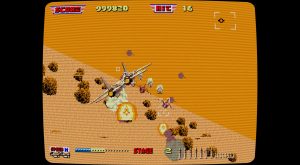
After Burner II is unmistakably a product of the arcade era—and it shows from the very first moment. The game is designed to keep you constantly under pressure: enemies appear in a flash, missiles come from all directions, and reaction time is a luxury you can barely afford. What makes the game challenging isn’t so much clever enemy AI, but the sheer speed of the action and the complete lack of checkpoints. Lose a life, and you’re ruthlessly thrown back—something that can become frustrating fast, especially in the later levels when the screen becomes increasingly chaotic.
Multiplayer or Solo Only
Unfortunately, there’s no multiplayer mode, this aerial battle remains a strictly solo affair.
Conclusion & Rating: Is Sonic Spinball Still Worth Playing Today?

After Burner II on the Mega Drive is a solid but noticeably scaled-down home version of the arcade classic. The speed, visuals, and sound capture the core vibe well, but over time, it lacks depth. The game starts off strong but quickly wears thin. For arcade fans or those looking for a quick burst of adrenaline and action, it does the job – but as a deeper action experience, it ultimately falls a bit short.
~ Roger Wilco ~
After Burner 2 (Mega Drive)

Conclusion
After Burner II on the Mega Drive delivers fast-paced arcade action with solid sound and speed, but lacks depth in the long run. Great for a quick adrenaline rush – just don’t expect lasting substance.


